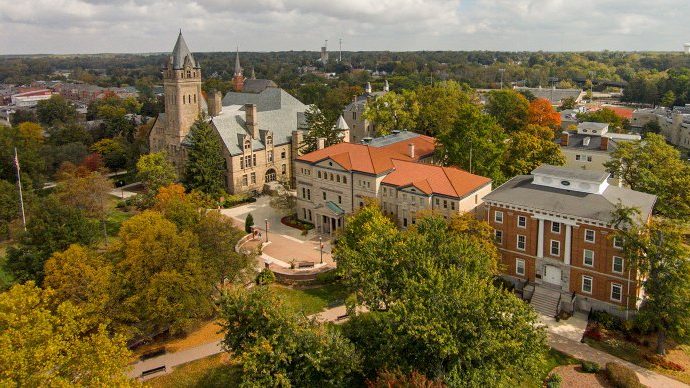- Exploring what a discipline offers to non-specialists can provide new ways of putting together curricular offerings. This doesn’t mean that courses have to lose rigor or intellectual salience, but it does mean that they may need to be reframed around new questions.
- Small academic units are often put into a bind. They need the assistance of colleagues in other departments, and this work needs to be valued by these other departments and the larger institution. Raise these issues with chairs and the dean.
- Combination departments, such Departments of World Literatures and Cultures, can offer new opportunities for teaching across linguistic, cultural, and disciplinary lines in ways that students find compelling.
- Larger disciplinary conversations can open the door to reimagining curricula at the departmental level. Controversies that can seem insular are sometimes more interesting to non-specialists than we imagine.
Ohio Wesleyan University Classics Major

When Hank Blume was hired as a visiting assistant professor in 2021 to teach Classics at Ohio Wesleyan University, the major had been folded into the Department of World Languages and Cultures several years prior. He found himself faced by one of the challenges of small academic units: The program needed a tenure-track line, but with less than a handful of majors, it also needed to attract more students. Working closely with colleagues in his department, Blume reimagined what Classics could be on his campus. While the numbers of majors might always be relatively small, he saw an opportunity to interest a wider range of students. Some of his thoughts were influenced by larger disciplinary conversations—such as the need to remove gatekeeping barriers, address the field’s history with white supremacy, and reimagine the discipline, while still maintaining a sense of rigor. Other paths forward emerged through working closely with his colleagues in World Languages and Cultures.
A series of conversations with Spanish professor Glenda Y. Nieto-Cuebas helped him to focus on the insights and understanding that Classics can offer non-specialists. She asked him a pointed question: What can you teach me right now that would help me in the modern world? Blume describes this as a “transitional moment” when he began to think about the questions he could answer as well as large questions that would interest a wide range of students and faculty. It was possible, he realized, to design a cluster of courses that were rooted in Classics but addressed current concerns.
They began to rethink the coursework and how it would tie into other programs at the university. While some classes did not need revision (Mythology and language courses), he reimagined others. A course on the Roman Empire became Empire and Ethnicity in the Ancient World, focusing on the relationship between different empires and ethnicity, the ways that ethnicity informs imperialism, and how ethnicities change over time. Yet other courses were designed to be highly flexible and interdisciplinary, so that they could be taught by faculty in other departments—for example, a course titled Classical Literature and Its Reception (which could be taught in either the Department of English or the Department of World Languages and Cultures) and one titled Classics in the American Empire (which could be taught in the History Department).
While the revamped program is still relatively new, Blume is encouraged by student interest: enrollments are as high as they can be, given the constraints of smaller class sizes; the number of majors has increased from two to seven; and he is now an assistant professor. Some questions remain to be answered: Will faculty in other departments step forward to teach the interdisciplinary courses he has created? What other ways might he strengthen connections with other departments? Still, Blume is encouraged that the work of reimagining Classics can not only help it survive but also thrive.

